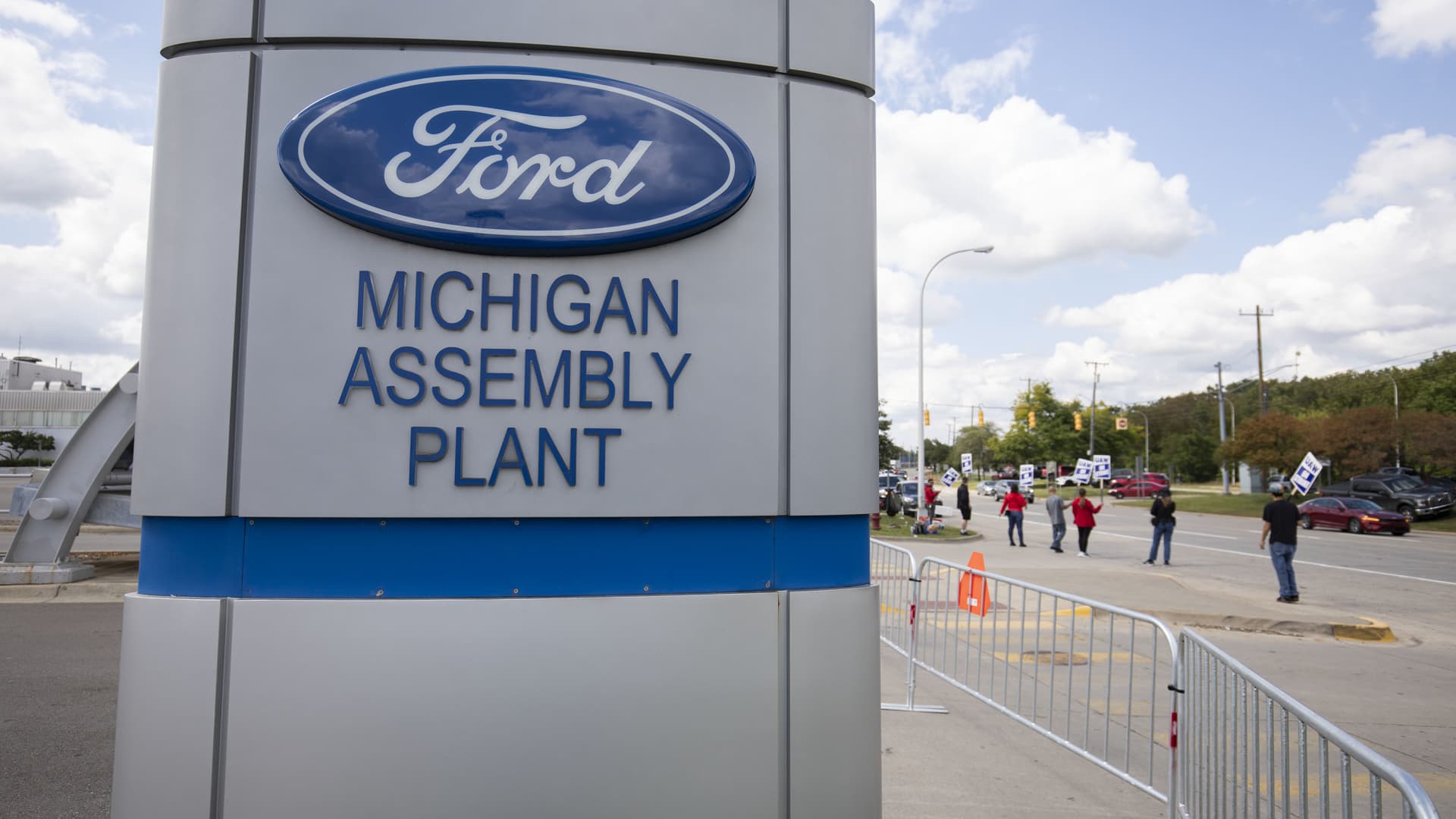DETROIT – Ford Motor’s third-quarter U.S. new vehicle sales increased 7.7% compared to a year earlier, led by higher sales of traditional pickup trucks across its lineup.
The Detroit automaker on Wednesday reported a 15.3% increase in truck sales compared to a 5.1% decline in cars and sales of SUVS that were essentially flat.
Ford’s sales jump was in line with Edmunds’ expectations for the automaker but below auto analyst forecasts for the overall industry of an increase of 15% to 16% for the third quarter.
The automaker’s sales of electric vehicles were up by 14.8% during the quarter to nearly 21,000 units. A vast majority of those sales were the Mustang Mach-E crossover, as sales of the F-150 lightning electric pickup were off about 46% during the quarter due to slower-than-expected demand and downtime at the plant.
Ford’s EV sales represented only about 3% of the roughly 1.5 million vehicles sold by the automaker through the first nine months of the year, including 4.2% of sales during the third quarter.
Ford hybrid sales, led by the F-150 and Maverick hybrid trucks, posted third-quarter sales of 34,861 vehicles – up 41.4% over a year earlier.
An ongoing strike by the United Auto Workers union against the Detroit automakers, including Ford, was not expected to directly impact sales much during the quarter.
Next month could be more challenging due to the strikes, however, especially for vehicles such as the Ford Bronco SUV and Ranger midsize pickup – the first vehicles for the automaker to stop production due to the strikes, which began Sept. 15.
Only 25,200 workers, or roughly 17% of UAW members covered by the expired contracts with GM, Ford Motor and Stellantis, are part of the work stoppages.
UAW has been gradually increasing the strikes since the work stoppages began, after the sides failed to reach tentative agreements by Sept 14. The targeted, or “stand up,” strikes are taking place instead of national walkouts in which all plants simultaneously strike.
National strikes affect the companies more quickly. The targeted walkouts aim to preserve the union’s funds and prolong the work stoppages to keep the automakers off keel.
